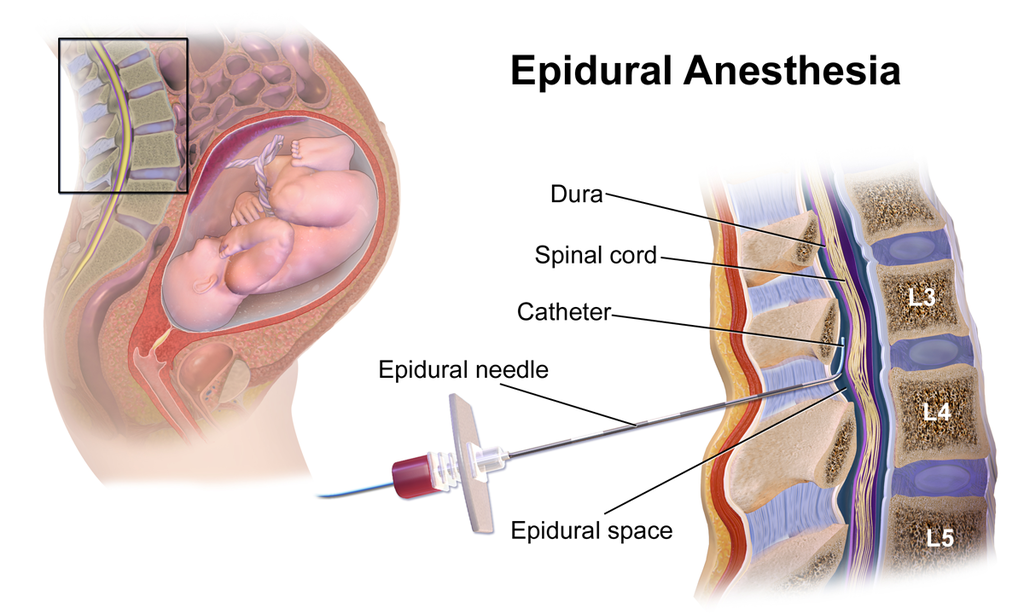Labor and Birth
Labor Medication and Tools
Epidurals Medication
An epidural is an optional medication that a mother can be administered to reduce the pain of labor. It is important to note that an epidural reduces labor pains but does not completely block sensation as it allows the mother to still feel contractions. An epidural is administered via injection into the epidural space surrounding the spinal cord (See Figure 1).

The epidural will become effective approximately 10 to 20 minutes following administration and is long-lasting to provide pain relief throughout labor. The composition of an epidural is a combination of anesthetics and opioids such as bupivacaine, ropivacaine, and fentanyl. There are several additional risks that come with using an epidural. These risks include increased difficulty in pushing, lowered blood pressure, halted labor, and difficulty walking due to numbness.
Other Pain-Reducing Methods
There are several other options besides an epidural to manage pain during labor. These options include spinal block, combined spinal-epidural block, intravenous pain medication, and pudendal block. The spinal block provides nearly instant relief from pain and lasts from 1 to 2 hours. Spinal blocks are normally seen in an elected c-section. The most common medications used in a spinal block are bupivacaine, morphine, and fentanyl. Another method to minimize the pain of the mother during labor is called a combined spinal-epidural block, and it is a combination of a spinal block and epidural where it provides nearly immediate relief that is long-lasting.
Another method that can be used for pain relief during labor is by administering intravenous pain medication. This method is often used when the mother is unable to do a spinal block or epidural. One of the downsides of intravenous pain medication is that it can cause drowsiness in the mother and baby. Once a mother reaches the stage of labor where they are pushing, they have the option for a pudendal block. This block reduces feeling in the birth canal and is often combined with other pain relief methods. A pudendal block is commonly composed of lidocaine or chloroprocaine.
The Use of Birth Tools
Several tools can also be used to help with the vaginal birthing process. Two common tools used are forceps and a vacuum. Forceps are tongs shaped to fit snugly around the baby’s head and help to gently guide the baby out of the birthing canal. A vacuum is as it sounds. It is a vacuum that ends in a cup that suctions to the baby’s head, allowing for the baby to be gently guided out of the birthing canal. These tools are not always used during labor. They are reserved for several situations, including if the baby is not well-positioned or has discontinued movement along the birth canal, if the mother is no longer able to continue pushing, if the baby’s heartbeat alters, or if the mother has an underlying medical condition that could cause issues. In all these cases, manual tools can be used to prevent the need to move to a surgical birth, such as a cesarean. Note that there are several risks associated with the use of manual tools. For instance, the mother can suffer lacerations to the vagina, anus, and urethra, which could lead to further blood loss. The mother may also not be able to control her bladder for a time following the use of tools. Finally, there are some risks to the baby including facial injuries, skull fracture, facial muscle weakness, and additional bleeding.
Image Sources
- Figure 1. “Epidural Anesthesia” is from Bruce Blaus via Wikimedia Commons, licensed CC BY SA 4.0.

